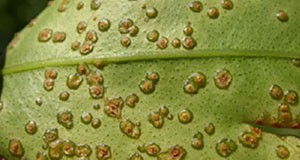
Asiatic citrus canker is a bacterial disease of citrus that causes necrotic lesions on leaves, stems, and fruit of infected trees. Severe cases can cause defoliation, premature fruit drop, twig dieback, and general tree decline.This eight-page fact sheet explains the history of citrus canker in Florida, describes the symptoms of citrus canker, and details how to manage the spread of citrus canker disease by preventing infection and controlling existing infections. Written by Megan M. Dewdney, Jamie D. Burrow, James H. Graham, Timothy M. Spann, and Ryan A. Atwood, and published by the Horticultural Sciences department.
http://edis.ifas.ufl.edu/pp323
Category: Agriculture
Sugarcane Ring Spot
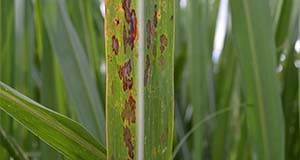
Ring spot, caused by the fungus Leptosphariea sacchari, is a disease of sugarcane that has been known to occur in Florida for over 80 years. Ring spot usually affects only the older leaves, and therefore is considered a minor disease. However, correctly identifying the disease in the field can help to reduce unnecessary chemical sprays. This two-page fact sheet outlines the symptoms and spread of the disease, as well as how to prevent and control Sugarcane Ring Spot. Written by P. Rott, J.C. Comstock, H.S. Sandhu, and R.N. Raid, and published by the Plant Pathology Department.
http://edis.ifas.ufl.edu/pp321
Determination of Carbonate Concentrations in Calcareous Soils with Common Vinegar Test
When raising crops on calcareous soils, growers need to know how much calcium carbonate is in the soil before they can employ any management practices. Growers can test the level of carbonate in their soils using store-bought vinegar and other household supplies. This 3-page fact sheet explains the chemistry behind the vinegar test and instructions for performing the test and interpreting the results. Written by Qiang Zhu, Monica Ozores-Hampton, and Yuncong Li, and published by the UF Department of Horticultural Sciences, June 2015.
http://edis.ifas.ufl.edu/hs1262
Why We Should Be Concerned about Methicillin-Resistant Staphylococcus aureus (MRSA)
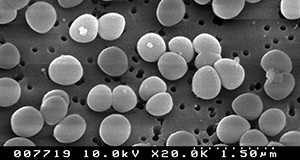 Treatment and complete resolution of MRSA infections can be extremely challenging, since many MRSA strains are multidrug-resistant. This 6-page fact sheet provides an overview of MRSA, different strains, risk factors, symptoms, prevention, and the pathogen’s effects on human health and agriculture. Written by Austin B. Mogen and Kelly C. Rice, and published by the UF Department of Microbiology and Cell Science, September 2015.
Treatment and complete resolution of MRSA infections can be extremely challenging, since many MRSA strains are multidrug-resistant. This 6-page fact sheet provides an overview of MRSA, different strains, risk factors, symptoms, prevention, and the pathogen’s effects on human health and agriculture. Written by Austin B. Mogen and Kelly C. Rice, and published by the UF Department of Microbiology and Cell Science, September 2015.
http://edis.ifas.ufl.edu/mb006
Postharvest Storage, Packaging and Handling of Specialty Crops: A Guide for Florida Small Farm Producers

Every year farmers must harvest their crops. This process marks the end of the growing season and carries social significance in communities, but it also creates challenges for producers trying to deliver fresh, high-quality produce to market. Good postharvest practices establish appropriate cold chains that maintain the correct temperatures, humidity, and respiration rates while also ensuring the safety, sanitation,and quality of the fruits. These postharvest practices differ, depending on the size and economic situation of an operation. This eighteen-page fact sheet provides postharvest storage, packaging, and handling recommendations for small farm specialty crop producers. Written by Jonathan Adam Watson, Danielle Treadwell, Steven A. Sargent, Jeffrey K. Brecht, and William Pelletier, and published by the Horticultural Sciences Department.
http://edis.ifas.ufl.edu/hs1270
Ocho Pasos para Desarrollar un Plan Simple de Mercadeo

El mercadeo es parte esencial de un negocio. De hecho es el corazón de cualquier negocio que sirva la función vital de convertir actividades de producción en desempeño financiero, asegurando la supervivencia del negocio. El mercadeo es clave, sin importar el tipo de negocio (incluyendo la agricultura).
This 5-page fact sheet provides a rationale for developing a marketing plan, a step-by-step process for creating one, and a marketing plan worksheet. Written by Edward A. Evans and Fredy H. Ballen, and published by the UF Department of Food and Resource Economics. Translated into Spanish November 2015. (Photo credit: Thinkstock)
http://edis.ifas.ufl.edu/fe978
(also available in English as “Eight Steps to Developing a Simple Marketing Plan” at http://edis.ifas.ufl.edu/fe967)
Weed Control for Ornamentals inside Greenhouses and Other Enclosed Structures
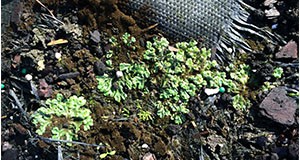
Maintaining a weed-free greenhouse is important for producing healthy and marketable crops. Weeds will compete with crops for water, light, and nutrients. Weeds can find favorable conditions for growth in gravel and along edges, tears, and worn areas of ground cloth. It is important to frequently scout for weeds. This five-page fact sheet describes both chemical methods of controlling weeds, but also non-chemical methods, such as sanitation and prevention, hand weeding, and cultural control practices. Written by Chris Marble and Jeremy Pickens, and published by the Environmental Horticulture Department.
http://edis.ifas.ufl.edu/ep528
El Zika, un Virus Transmitido por Mosquitos
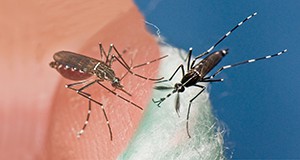
Zika es un virus transmitido por mosquitos que se ha esparcido recientemente en regiones tropicales y ha causado epidemias, especialmente durante los últimos 8 o 9 años. En su ámbito nativo en África Occidental y Uganda, el virus se mantiene en los bosques, circulando entre mosquitos que viven en huecos de árboles y primates arbóreos; las infecciones de humanos se consideran incidentales y de poca importancia médica. Una cepa del virus que se implicó en brotes en Polinesia Francesa emergió en el Norte de Brasil en el 2015 y causó gran consternación debido a la alta incidencia de microcefalia en bebes nacidos de madres que fueron infectadas con el virus durante la gestación. Transmisión local, principalmente por el mosquito de la fiebre amarilla Aedes aegypti, ha sido documentada en la mayoría de los países tropicales de las Américas, pero aún no se ha detectado en Los Estados Unidos Continentales. Los síntomas de la infección incluyen, salpullido, dolor de cabeza, fiebre, dolor muscular y en las coyunturas, conjuntivitis, y malestar general.
This 7-page fact sheet written by J. R. Rey, L. P. Lounibos, B. W. Alto, N. D. Burkett-Cadena, C. C. Lord, C. T. Smartt, and C. R. Connelly and published by the Department of Entomology and Nematology is the Spanish language version of Zika, a Mosquito-Transmitted Virus and describes the Zika microbe, its mosquito hosts, and the disease it causes. A history of the virus and its migration are included, along with some details about the virus in the state of Florida and preventative measures people can take to avoid infection. The best way to avoid contracting Zika (and other mosquito-borne diseases) is not to get bitten in the first place. Take precautions to avoid mosquito bites.
http://edis.ifas.ufl.edu/in1121
Smart Strawberry Advisory System for Mobile Devices
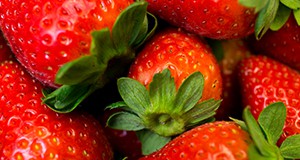 Like the web-based SAS, the SAS: Strawberry Advisory System mobile app monitors real-time and forecast weather conditions that increase the risk for Botrytis (gray mold) and anthracnose fruit rots, providing risk level information for each disease. The app provides easy access to the information growers need to make spraying decisions in the field, saving them time, helping improve disease control, and avoiding unnecessary fungicide applications. This 3-page fact sheet provides an overview of the SAS mobile app. Written by Clyde W. Fraisse, Natalia Peres, and José Henrique Andreis, and published by the UF Department of Agricultural and Biological Engineering, August 2015.
Like the web-based SAS, the SAS: Strawberry Advisory System mobile app monitors real-time and forecast weather conditions that increase the risk for Botrytis (gray mold) and anthracnose fruit rots, providing risk level information for each disease. The app provides easy access to the information growers need to make spraying decisions in the field, saving them time, helping improve disease control, and avoiding unnecessary fungicide applications. This 3-page fact sheet provides an overview of the SAS mobile app. Written by Clyde W. Fraisse, Natalia Peres, and José Henrique Andreis, and published by the UF Department of Agricultural and Biological Engineering, August 2015.
http://edis.ifas.ufl.edu/ae516
Water and Nutrient Management Guidelines for Greenhouse Hydroponic Vegetable Production in Florida
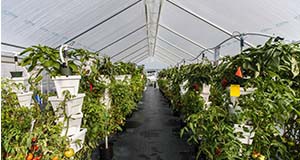
Many small farms are implementing greenhouse hydroponic systems. Perhaps the most challenging aspect of crop management for smaller growers is the control of water and nutrient delivery in a soilless media system. This six-page fact sheet focuses on relatively inexpensive strategies to help small growers know both when to start irrigation events and how long to run a single event when growing in soilless media. Written by Robert C. Hochmuth, Natalie B. Parkell, Wanda L. Laughlin, and Sean C. Rider, and published by the Horticultural Sciences Department.
http://edis.ifas.ufl.edu/hs1274
Ejemplo Ilustrativo de los Costos y Rentabilidad de la Produccion de Aguacates en el Estado de la Florida
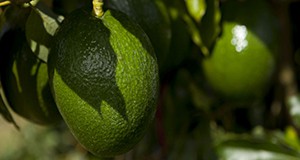
Los cultivos de árboles frutales son de gran importancia económica en la agricultura del estado de la Florida; en este segmento, la industria del aguacate ocupa el segundo reglón económico tras los cítricos. Aproximadamente el 80 por ciento de la cosecha se vende fuera del estado; por lo tanto, la industria aporta una cantidad considerable de “dólares nuevos” al estado, lo que resulta en un impacto económico total de cerca de $100 millones por año. Este artículo proporciona una estimación de los costos y rendimientos asociados a la producción de aguacate en el Condado de Miami-Dade y un breve análisis de la rentabilidad de la industria.
Written by Edward A. Evans and Ingrid Bernal Lozano, published by the UF Department of Food and Resource Economics in December 2014, and translated into Spanish in November 2015. The English version, titled Sample “Avocado Production Costs and Profitability Analysis for Florida,” is available at http://edis.ifas.ufl.edu/fe837. (UF/IFAS Photo by Tyler Jones).
http://edis.ifas.ufl.edu/fe970
TAP Sampling for Asian Citrus Psyllid (ACP) Field Sheet

This new field sheet provides information on Tap sampling for Asian Citrus Psyllid (ACP). Monitoring ACP populations is an important tool in the integrated management of citrus greening. The most efficient way to estimate field populations of this insect is by monitoring adults. Tap sampling has proven to provide data needed to make informed decisions for managing this insect pest. Written by Phil Stansly, and published by the Entomology and Nematology Department.
http://edis.ifas.ufl.edu/in1116
School Garden: Plastic Wading Pool Hydroponics
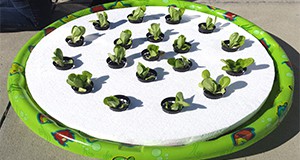 School gardens are a great way to get youth interested in where their food comes from. Hydroponics, or the cultivation of plants in liquid nutrient solutions rather than in soil, is a fascinating way to teach students about food systems. This 4-page fact sheet lists the materials, tools, and construction steps needed to grow a variety of crops in a wading pool hydroponic garden. Written by Edmund L. Thralls, and published by the UF Department of Environmental Horticulture, October 2015.
School gardens are a great way to get youth interested in where their food comes from. Hydroponics, or the cultivation of plants in liquid nutrient solutions rather than in soil, is a fascinating way to teach students about food systems. This 4-page fact sheet lists the materials, tools, and construction steps needed to grow a variety of crops in a wading pool hydroponic garden. Written by Edmund L. Thralls, and published by the UF Department of Environmental Horticulture, October 2015.
http://edis.ifas.ufl.edu/ep525
Florida Biosolids: Management and Land Application Rules
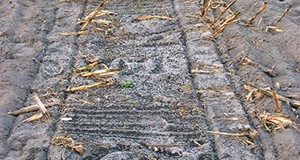 Biosolids are the liquid, semisolid, and solid fractions of the treated waste stream from a domestic wastewater treatment facility (WWTF). On August 29, 2010, the Florida Department of Environmental Protection (FDEP) formally adopted its rule for the management of wastewater biosolids, Chapter 62-640, Florida Administrative Code (F.A.C. 2010). This 6-page fact sheet from the Florida Biosolids series covers applicability of the rule, the intent of Chapter 62-640, F.A.C., land application requirements, biosolids storage, cumulative application limits, setback distances, pH, soil depth, runoff prevention, additional application site restrictions for Class B biosolids, NMPs, and special geographic areas. Written by John Hallas, Cheryl L. Mackowiak, and Ann C. Wilkie, and published by the UF Department of Soil and Water Science, October 2015.
Biosolids are the liquid, semisolid, and solid fractions of the treated waste stream from a domestic wastewater treatment facility (WWTF). On August 29, 2010, the Florida Department of Environmental Protection (FDEP) formally adopted its rule for the management of wastewater biosolids, Chapter 62-640, Florida Administrative Code (F.A.C. 2010). This 6-page fact sheet from the Florida Biosolids series covers applicability of the rule, the intent of Chapter 62-640, F.A.C., land application requirements, biosolids storage, cumulative application limits, setback distances, pH, soil depth, runoff prevention, additional application site restrictions for Class B biosolids, NMPs, and special geographic areas. Written by John Hallas, Cheryl L. Mackowiak, and Ann C. Wilkie, and published by the UF Department of Soil and Water Science, October 2015.
http://edis.ifas.ufl.edu/ss634
Practices to Minimize Flooding Damage to Commercial Vegetable Production

Flooding is a major risk for commercial vegetable production in south Florida, especially in the south Dade County area. Flooding causes oxygen deficiency, or hypoxic stress, causing the plants to produce less energy. This shortage in energy prevents the absorption of nutrients like nitrogen, phosphorous, and potassium. This four-page fact sheet discusses several different management practices for overcoming flood damage, including the use of nitrogen and potassium fertilizers, oxygen fertilizers, growth regulators, and fungicides. Written by Goudong Liu, Yuncong Li, and Xiangju Fu, and published by the Soil and Water Science Department.
http://edis.ifas.ufl.edu/ss425
An Overview of the US and Mexico Strawberry Industries
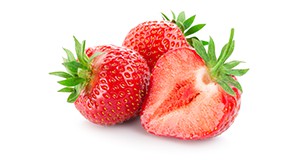
The statistics of the Food and Agriculture Organization of the United Nations indicate that world production of strawberries has exceeded 4 million metric tons since 2007. With a total production of 1.4 million tons (3 billion pounds) in 2012, the United States is the largest producer among countries where statistical data are available, accounting for about 30% of the world supply. Production in Mexico increased from 140 thousand tons to 360 thousand tons, making Mexico the second-largest strawberry producer in the world. This four-page fact sheet written by Feng Wu, Zhengfei Guan, and Alicia Whidden and published by the UF Food and Resource Economics Department provides an overview of the US and Mexican strawberry industries, paying special attention to the trade relations between the two countries. (Photo credit: anna1311/istock/Thinkstock)
edis.ifas.ufl.edu/fe971
Spotted Wing Drosophila Drosophila suzukii Identification, Ecology, and Management
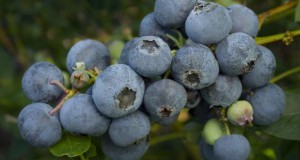 Spotted wing drosophila (SWD) is a tiny invasive fruit fly pest of small fruits. It has been found infesting fruits in Europe and North and South America. Since its first capture in California in 2008, SWD has established populations throughout the United States in over 47 states. This trifold brochure written by Lindsy Iglesias, Teresia W. Nyoike, and Oscar E. Liburd and published by the Entomology and Nematology Department describes how to identify and monitor these tiny pests and explains a few strategies to control them and limit the damage they cause to fruit crops.
Spotted wing drosophila (SWD) is a tiny invasive fruit fly pest of small fruits. It has been found infesting fruits in Europe and North and South America. Since its first capture in California in 2008, SWD has established populations throughout the United States in over 47 states. This trifold brochure written by Lindsy Iglesias, Teresia W. Nyoike, and Oscar E. Liburd and published by the Entomology and Nematology Department describes how to identify and monitor these tiny pests and explains a few strategies to control them and limit the damage they cause to fruit crops.
http://edis.ifas.ufl.edu/in1098
Spironucleus Infestations (Spironucleosis) in Freshwater Aquarium Fish
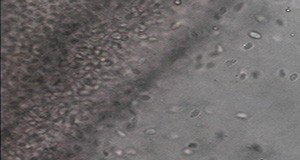
A group of species of single-celled parasites called Spironucleus cause disease in aquacultured and captive fish. Found in cold, temperate, and tropical climates, Spironucleus species can infect a variety of freshwater and marine ornamental and food fish, as well as crustaceans and shellfish.
Five species of Spironucleus are currently recognized: S. salmonicida, S. barkhaus, and S. torosa can infest marine organisms, while S. salmonis and S. vortens can infest freshwater ornamental fish. This four-page fact sheet written by Ruth Francis-Floyd and Roy P. E. Yanong and published by the Department of Large Animal Clinical Sciences focuses on S. vortens and its effects on ornamental cichlids, explaining which cichlids are susceptible, how to identify S. vortens , and how to confirm, manage, and prevent S. vortens infestations. (Photo credit: Roy P. E. Yanong, UF/IFAS Extension Tropical Aquaculture Laboratory)
http://edis.ifas.ufl.edu/vm053
Pesticide Emergencies: Fires and Spills

Although accidents and emergencies involving pesticides are rare, unfortunately they do occur. Pesticide fires or spills can result in water, soil, and air contamination; damage to plants; injury to livestock, wildlife, or pets; and can endanger the health of the applicator and other people. Those using pesticides mus be prepared to respond to fires and spills as emergencies and act promptly and correctly. This six-page fact sheet explains how to reduce fire and spill hazards and what to do if a fire or spill should occur. Written by Frederick M. Fishel, and published by the Agronomy Department.
http://edis.ifas.ufl.edu/pi258
Pesticides: Routes of Exposure
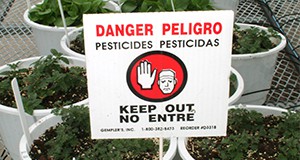
Pesticides can cause both short-term and long-term effects in humans. Human exposure to pesticides can happen through four major routes: through the mouth and digestive system, through the eyes, through the skin, or through the nose and respiratory system. This two-page fact sheet explains each route of pesticide exposure, providing information on how to reduce the risk of pesticide exposure and hazard. Written by Frederick M. Fishel, and published by the Agronomy Department.
http://edis.ifas.ufl.edu/pi260
